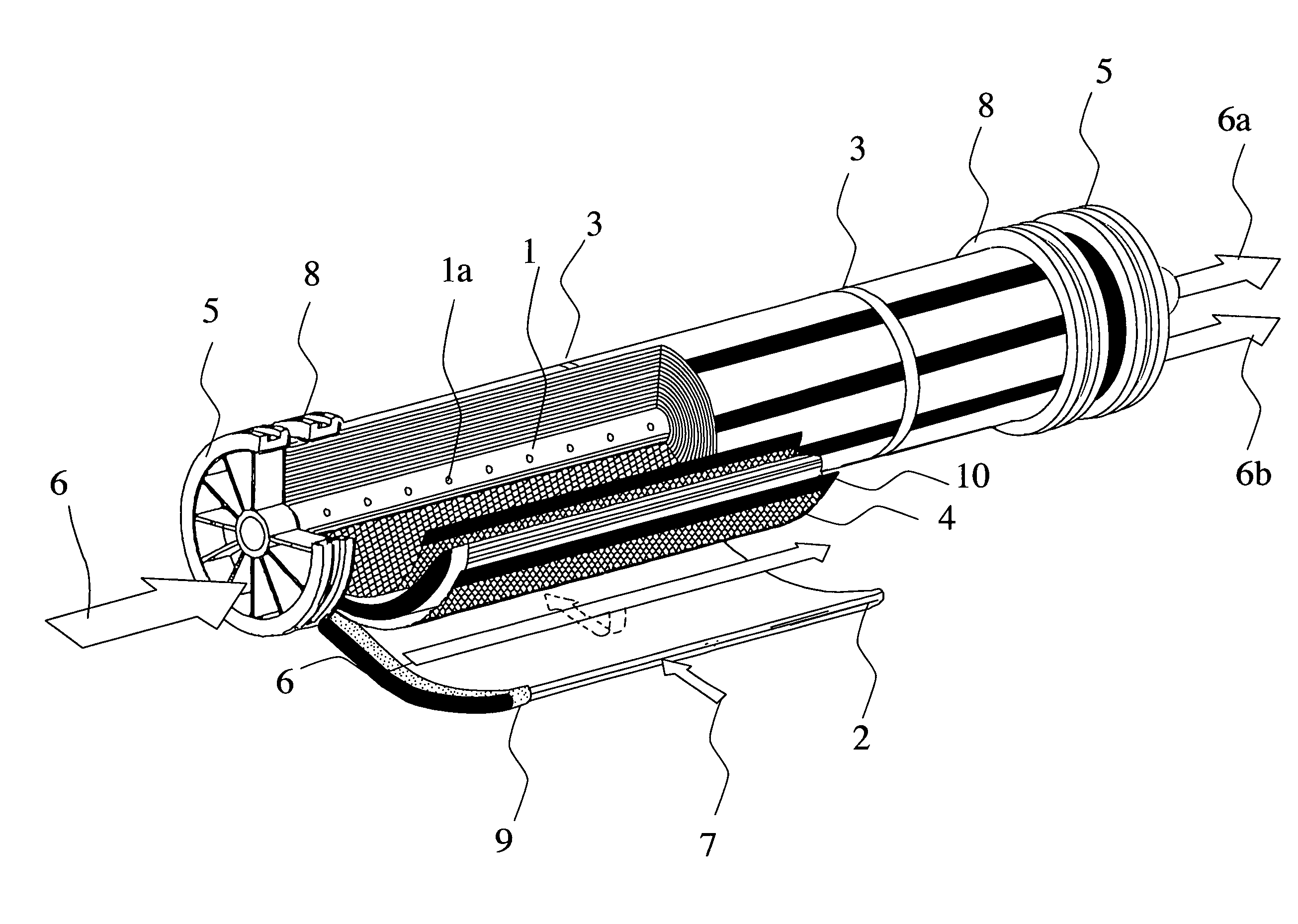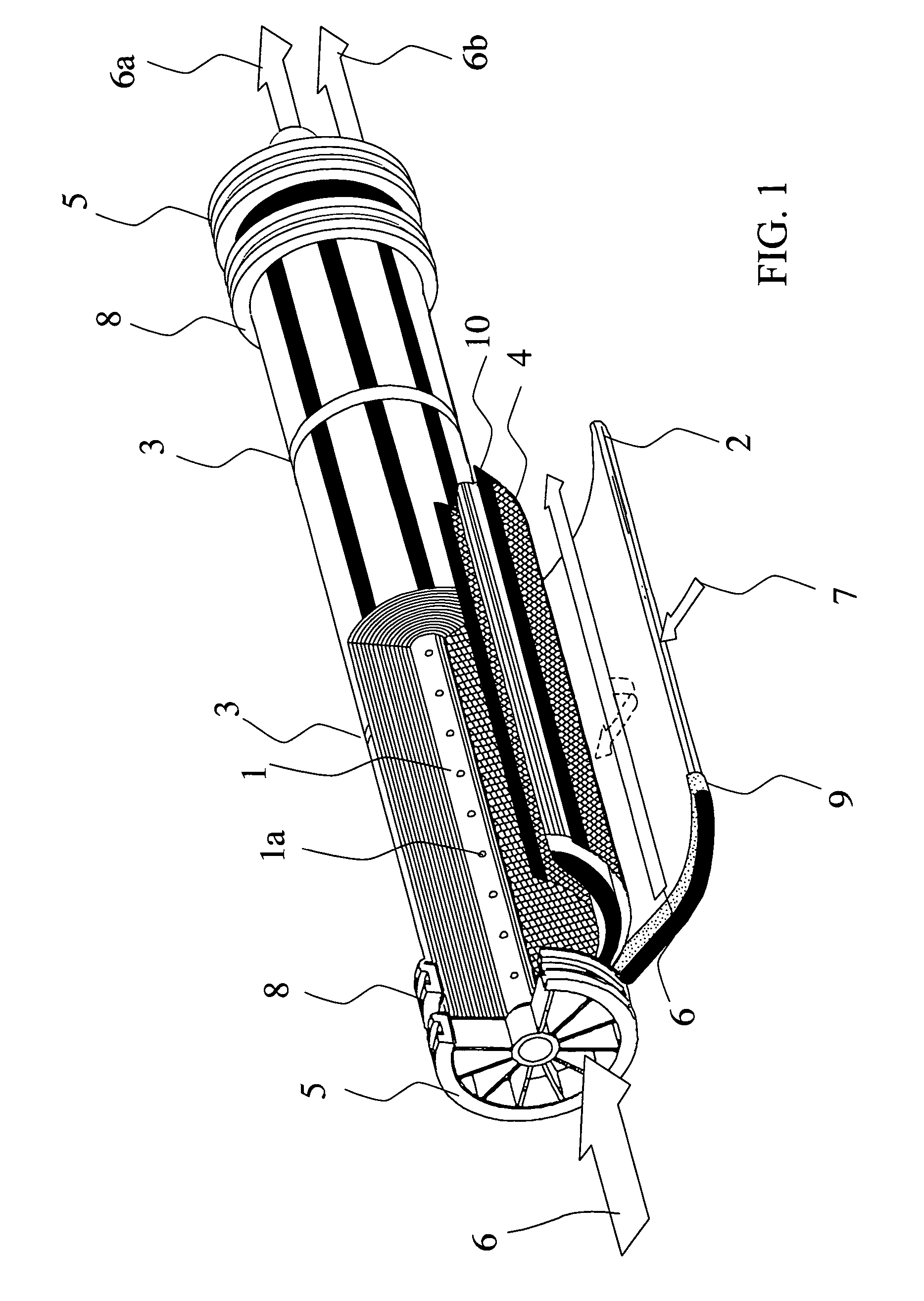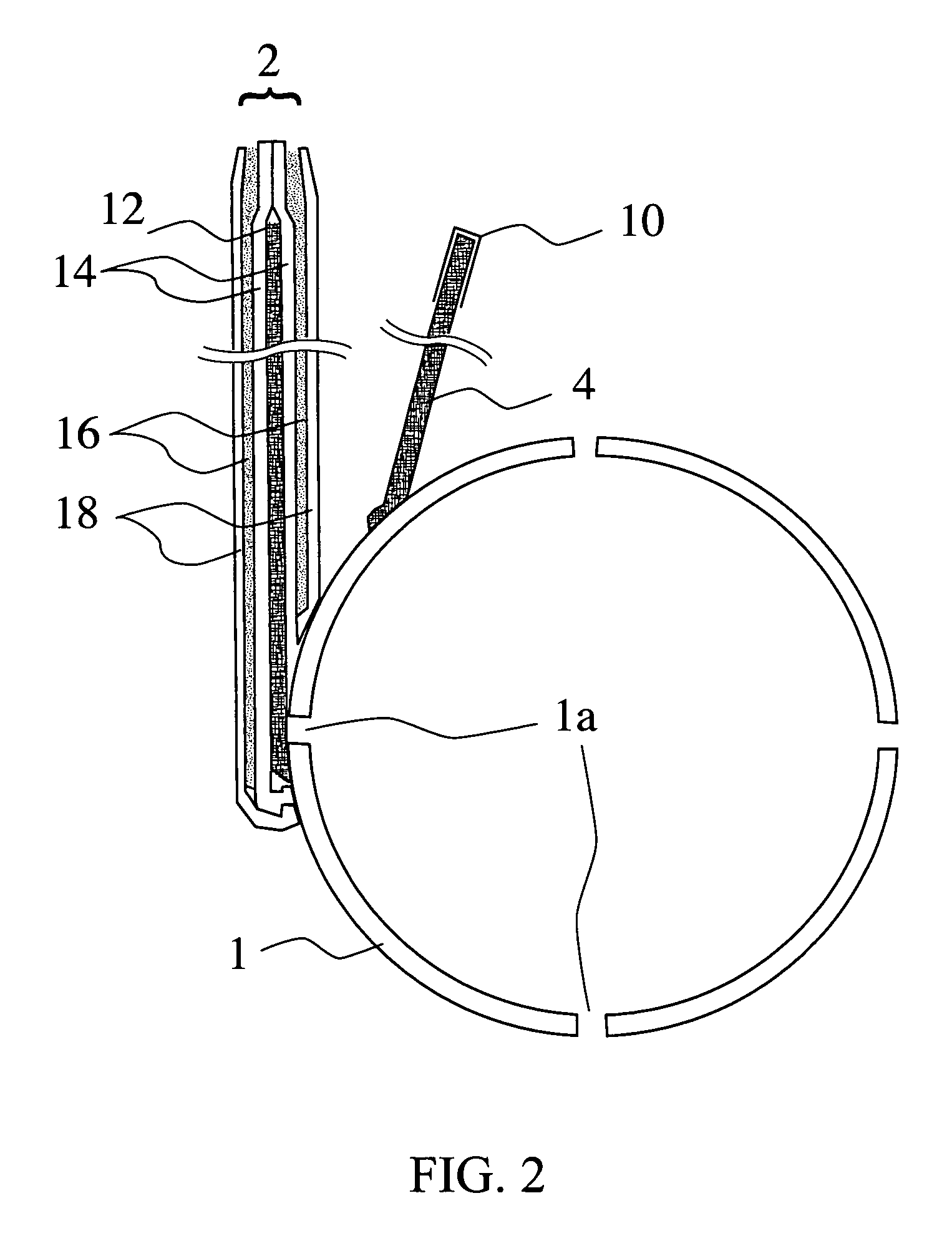Spiral-wound liquid membrane module for separation of fluids and gases
a liquid membrane module and spiral-wound technology, applied in the direction of membranes, separation processes, distillation, etc., can solve the problems of complex multi-step process, high energy requirements, and inability to achieve ideal separation methods for fuel ethanol, etc., and achieve low energy requirements
- Summary
- Abstract
- Description
- Claims
- Application Information
AI Technical Summary
Benefits of technology
Problems solved by technology
Method used
Image
Examples
example 1
Biofuels
[0104]In the biofuels industry, the disclosed device can be used for removing and purifying ethanol from dilute aqueous fermentation broth. The membrane module is constructed using composite pervaporation membranes suitable for permeating ethanol selectively over water or the extraction solvent, such as those based on a permselective layer of polydimethyl siloxane (PDMS, silicone rubber), or mixtures of PDMS and inorganic ethanol permeation-enhancing materials such as silicalite-1, a hydrophobic zeolite. Examples of such pervaporation membranes are those produced by GFT and MTR. The feed, solvent and permeate spacers are made of polypropylene mesh, or other materials that are compatible with the fluids being contacted. Examples of materials that can be used for the hydrophobic microporous membrane are polypropylene (e.g Celgard) or polytetrafluoroethylene (e.g. GoreTex). The hydrophilic skin layer is composed of a material compatible with both the feed / retentate and the solv...
example 2
Bio-Based Chemicals
[0110]In the bio-based materials industry, the device can be used for removing chemicals formed by fermentation means from dilute aqueous fermentation broth. Such chemicals, for example, are alcohols such as methanol, ethanol, propanols, butanols, diols; acetone; and carboxylic acids such as lactic, acetic or propionic acid. Often, such products are inhibitory to the microorganisms producing them. Butanol is a good example, wherein butanol production decreases to near zero at broth concentrations around 1% butanol. Continuous removal of the inhibitory fermentation products has been shown to confer significant improvements in fermenter productivity and substrate utilization.
[0111]The module is suitable for recovery and purification of the lower alcohols. For carboxylic acid products, solvents or mixtures of solvents with some basicity, such as amines, are good choices due to their ability to complex with the acidic product, thus enhancing capacity, separation facto...
example 3
Wastewater Treatment
[0112]The device can be used for removal of VOCs (volatile organic compounds) from wastewaters. In this example, viable candidates for removal / recovery must be able to permeate the hydrophilic skin layer (i.e. be at least moderately hydrophilic), and be compatible with the materials of construction of the module and its housing. Also, they must be sufficiently volatile to permit efficient removal from the solvent by the pervaporation membrane.
[0113]In the case where the object is to reduce or eliminate the hazardous character of the wastewater to be treated, the extraction solvent must have an extremely low solubility in water, and / or be of sufficiently low toxicity and environmental impact as to significantly reduce the hazardous nature of the wastewater to make the operation worthwhile.
[0114]In the case where the wastewater contaminants have a high enough intrinsic value to make their recovery worthwhile, the extraction solvent must be economic to use (i.e. los...
PUM
 Login to View More
Login to View More Abstract
Description
Claims
Application Information
 Login to View More
Login to View More - R&D
- Intellectual Property
- Life Sciences
- Materials
- Tech Scout
- Unparalleled Data Quality
- Higher Quality Content
- 60% Fewer Hallucinations
Browse by: Latest US Patents, China's latest patents, Technical Efficacy Thesaurus, Application Domain, Technology Topic, Popular Technical Reports.
© 2025 PatSnap. All rights reserved.Legal|Privacy policy|Modern Slavery Act Transparency Statement|Sitemap|About US| Contact US: help@patsnap.com



